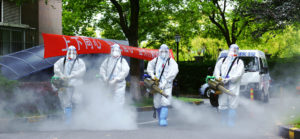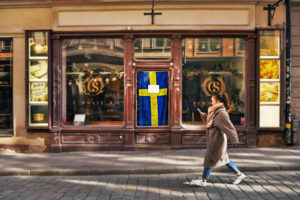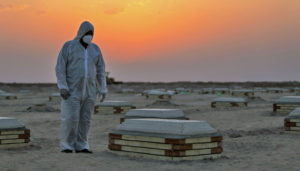It’s been more than two years since the world went into lockdown and schools, like most institutions, closed their doors. But the most devastating consequences of this policy are only just coming to light. Thousands of disadvantaged children have fallen behind.
It didn’t have to be this way. One country did it differently.
Late in the evening of 12 March 2020, journalists waited in a government building in Stockholm for the Swedish minister for education, Anna Ekström, to deliver a statement. Most of them expected the Swedish government to announce school closures. The night before in Copenhagen, the Danish prime minister, Mette Fredriksen, had declared that all preschools, schools, and universities in Denmark would close. Just a few hours earlier, Norway had followed suit. In Sweden, Ekström had just had a meeting with representatives of school principals and government agencies.
When she finally emerged and delivered her verdict, she explained that the government had chosen to keep the schools open. “It’s a clear recommendation from the Public Health Agency, and they are very keen to see it followed,” she said.
What no one at the time knew was that, behind the scenes, a retired epidemiologist had won his first battle. Seventy-year-old Johan Giesecke had been Sweden’s state epidemiologist between 1995 and 2005, and had a good relationship with Anders Tegnell, the man who now held the title. Decades earlier, Giesecke had hired Tegnell because he appreciated what appeared to be Tegnell’s complete indifference to what other people thought of him. Now, Giesecke referred to Tegnell as “his son”.
Both men, at the start of the pandemic, advocated for keeping schools open.
They did this for a number of reasons. Firstly, no one knew if school closures worked. On the one hand, there was some historic support for the policy: experiences from school holidays during influenza outbreaks in France, and the varying responses to the 1918 pandemic in the US, suggested that the number of cases could “maybe” be reduced by 15% by closures, in an optimistic scenario. But it also suggested that those gains would likely be lost if the children weren’t completely isolated when staying home from school.
And the intervention came at a high cost. The bill for closing British schools for 12 weeks was estimated at 1% of the country’s GDP in a Lancet article (among the authors were both Anders Tegnell and Neil Ferguson). In the US, an equivalent intervention cost 6% of the GDP according to the same article.
It was a hard decision to make — unless you were Johan Giesecke. He was completely convinced that closing schools was the wrong route to take. Above all, he thought, it would be unfair on the children. Everyone in the public health business knew that school absences had an adverse effect on children’s living conditions (see here, here, here and here) well into later life.
That night, even though he and Tegnell had managed to convince the Swedish government to keep schools open, Giesecke knew defending the decision would be hard. The politicians of the world were panicking. Early the next morning, Giesecke wrote in an email to Tegnell: “An nescis, mi fili, quantilla prudentia mundus regatur.” Just to be safe, he added a translation: “Don’t you know, my son, with how little wisdom the world is governed?”
The Swedes monitored the course of events unfurling on the rest of the continent. The countries closing their schools and preschools were growing more and more numerous. Tegnell couldn’t understand what they were doing.
His confidantes at the agency agreed with his assessment: the rest of the world was rushing headlong into a dangerous experiment with unforeseen consequences. The head of analysis at the agency explained that Spanish school closures had pushed the virus from the cities to the coasts, as wealthy families fled to their holiday homes. And school closures would force many key workers, including doctors and nurses, to stay home from their jobs.
“The world has gone mad,” Tegnell wrote to two colleagues.
There was one notable exception to the madness. In the UK, things still seemed normal. On 16 March, Tegnell and Giesecke emailed each other about a video of Boris Johnson and Chris Whitty explaining the British pandemic strategy, which so far included keeping schools open. The email thread’s subject line was: “Go, England”.
But what neither Tegnell nor the others knew as they watched the British decision-makers explaining their strategy was that soon the UK would change tack, after Imperial College released a report that made dire predictions. Without extensive action to slow the spread of coronavirus, as many as 510,000 people in the UK, and 2.2 million people in the United States, could die in the space of a couple of months. A rough translation based on Swedish population figures meant that almost 100,000 Swedes would perish.
But Giesecke was sceptical. He pointed to the example of “mad cow disease”: in 2001, the British had slaughtered millions of livestock to prevent it from spreading. “They thought 50,000 people would die. So how many did?” Giesecke liked to ask.
He always answered his own question: “157”.
He had more examples. Four years later, Imperial College warned that 150 million people around the world might die of bird flu. It ended up being 455. Four years after that, it was swine flu: the prognosis forecast 65,000 British deaths. The results? 474. Why would anyone trust the British scientists now? The new report, Giesecke wrote, was “way off the mark”.
Sweden, then, would defy the rest of the world. Here, people generally didn’t have to wear face masks, leisure activities were largely allowed to continue unhindered — and young children continued going to school, football practice and music lessons. Some birthday parties were cancelled, of course, but compared to the rest of the world, young Swedish kids’ lives changed very little. They never had to wear face masks in school, nor undergo systematic testing procedures.
Foreign media were quick to call the strategy “a disaster” (Time), “the world’s cautionary tale” (New York Times) and “deadly folly” (Guardian). In Germany, Focus described the policy as “sloppiness”; Italy’s La Repubblica concluded that the “Nordic model country” had made a dangerous mistake.
Many theories emerged as to why Sweden took such a different path. Some of them focus on Sweden’s constitution, which differs from other European countries’, for instance in the extreme autonomy of government agencies, and the constitutional right to move around the country. Others point to the fact that Swedish authorities were unnecessarily hawkish during the HIV epidemic, and weren’t willing to repeat the same mistake.
But the main reason for Sweden’s special path is uncomplicated: the Swedes made a different interpretation of the scientific data early on in the pandemic. They simply believed the scenarios presented by the rest of the world, and especially the one from Imperial College, to be vastly exaggerated. And they thought that lockdowns and school closures were terrible for public health in general.
Based on what we know today, two years on from the start of the pandemic, it’s pretty clear that they got it right. In July 2020, when deaths in Sweden — according to calibrations from researchers at the universities at Lund and Uppsala, based on the Imperial College report, were supposed to be between 85,000 and 96,000 — the Swedish death toll stood at less than 6,000. Throughout that spring, people had been free to move, go skiing, go to the gym; preschools and schools for kids under 16 had been open.
Children in other countries are still suffering the after-effects of lockdown. In the US, maths and reading skills for children between the ages of three and eight were lower than normal last autumn — and, according to the Center for School and Student Progress, native American, Black, and Hispanic students, as well as students in high-poverty schools, were disproportionately impacted.
“American children are starting 2022 in crisis,” concluded David Leonhardt of the New York Times when going through the available research.
The story is the same in all locked down and masked-up countries. In Germany, studies show an increase in childhood obesity, a deterioration of language skills and concerning fine motor deficiencies; in Norway, newspapers report a “wave of sick young people”. And in Britain, the Chief Medical Officer Chris Whitty has admitted that lockdowns exacerbated childhood obesity. The share of children starting school with a weight problem has risen by a fifth since the pandemic.
Early indications suggest that Swedish kids, on the other hand, have been spared. According to a new study in the International Journal of Educational Research, the proportion of students with weak reading skills did not increase during the pandemic, and students from disadvantaged socio-economic backgrounds did not disproportionately suffer. Of course, every individual study needs to be taken with a grain of salt: had the world’s politicians and policymakers heeded this principle in March 2020, it would have spared the world a lot of grief.
What price did Sweden pay for the health of its children? Strangely, in the nation that served as a control group during the pandemic, deaths not only ended up much lower than predicted, but lower than in most other comparable countries. According to the WHO’s latest figures, Sweden had an average excess death rate during 2020 and 2021 of 56 per 100,000 — lower than much of Europe and below the global average. The corresponding figure is 109 in the UK, 111 in Spain, 116 in Germany and 133 in Italy.
Over the last few weeks, social media has erupted over the WHO’s plans for a “pandemic treaty”. Many believe that it paves the way for the WHO to overrule national laws and impose lockdowns and other restrictions without citizens’ consent. While the specific concerns are largely unfounded, the fear is not difficult to understand. Had Sweden followed global received wisdom during the last pandemic, it might have come out the other side with a generation of scarred children. While most societies avoided questioning the efficacy of school closures, and still can’t have a reasoned debate about the restrictions, we quietly went our own way. Perhaps the Nordic approach remains a model, after all.
Disclaimer
Some of the posts we share are controversial and we do not necessarily agree with them in the whole extend. Sometimes we agree with the content or part of it but we do not agree with the narration or language. Nevertheless we find them somehow interesting, valuable and/or informative or we share them, because we strongly believe in freedom of speech, free press and journalism. We strongly encourage you to have a critical approach to all the content, do your own research and analysis to build your own opinion.
We would be glad to have your feedback.
Source: UnHerd Read the original article here: https://unherd.com





